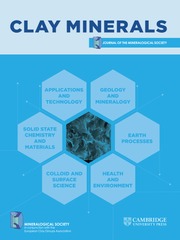No CrossRef data available.
Article contents
Sintering behaviour of Tunisian clay–degreaser mixtures: valorizing Weslatiya clay with chamotte as a quartz sand substitute
Published online by Cambridge University Press: 14 July 2025
Abstract
A clay from Weslatiya that is widely used in Tunisian ceramic production has abundant reserves but generates significant waste, posing environmental concerns if not handled appropriately. This study explores the valorization of this local clay by incorporating ceramic waste (chamotte) and quartz sand to produce eco-friendly materials, in line with sustainability and circular economy principles. X-ray diffraction and scanning electron microscopy analyses reveal that incorporating chamotte at levels exceeding 15% by weight improves the material’s properties. The Young’s modulus of the composite increases to 80 GPa, more than 2.5 times that of the basic clay. Chamotte can replace up to 30% of quartz sand without significantly affecting densification or porosity while preserving structural integrity. This approach offers flexibility in terms of material composition, enhancing performance and promoting sustainability by reusing waste materials for high-performance ceramics in industrial applications.
Information
- Type
- Article
- Information
- Copyright
- © The Author(s), 2025. Published by Cambridge University Press on behalf of The Mineralogical Society of the United Kingdom and Ireland.
Footnotes
Associate Editor: Asuman Turkmenoglu

